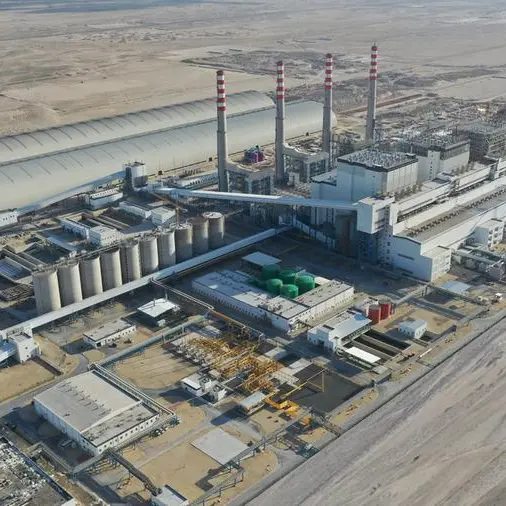More and more, our planet is getting affected by climate change, which puts societies, environments and people at risk. Luc Graré, Senior Vice President Sales and Marketing, REC gives us more details about their activities as a global provider of solar energy solutions and explains how the global solar industry has a bright long-term future.
In your opinion, how is climate change affecting our planet?
Climate change has a very high awareness in the wide public as well as by governments, organizations and business on a global scale - for good reasons. Based on the most recent Synthesis Report by the Intergovernmental Panel on Climate Change (IPCC), it is clear that climate change has widespread impacts on human and natural systems in every region already today and that drastic mitigation efforts have to be launched now to limit the temperature increase to below 2ºC. The most severe observed global impact from climate change is the increased average temperature by 0.85ºC compared to pre industrial levels. This is resulting in a) heat waves, like this summer in Europe, b) further water scarcity, e.g. in California, US this year, or c) reduced crop yields in African regions and Australasia.
However, more and more people clearly understand the urgency of fighting climate change, reducing emissions, improving energy efficiency and switching to renewable energies.
What reforms are currently gaining momentum?
40% of global energy related CO2 emissions are coming from the power sector. Therefore, it makes sense for governments, organizations and business industries to focus efforts on increasing energy efficiencies and switching to low-carbon energies like solar.
In line with the UN Climate Change conference, COP21, governments are setting ambitious targets for reducing carbon emissions, increasing share of renewable energies in the electricity mix and increasing efforts on energy efficiencies. The European Union, #3 Greenhouse Gas Emissions contributor worldwide, e.g., targets to increase the share of renewables in the electricity mix to at least 45% by 2030. The UAE has set a target of increasing clean energy contribution to the total energy mix from 0.2% in 2014, to 24% by 2021.
Allocating increased budgets for renewable energies and related technology, like storage, while at the same time reducing fossil fuel subsidies is also gaining momentum on a global scale.
With, in particular, solar and wind becoming more and more competitive, tenders are becoming the standard mechanism for utility scale projects. During the last six years, global PV system costs decreased by half. By 2020, a further decrease of 40% is expected, which will reach a global average of 5-8 USD cents per kWh. The LCOE for utility scale solar PV installations in the UAE is in the range of 5-10 USD cents per kWh and lower than in Germany for example.
Dubai focuses on a PPA approach (Power Purchase Agreement) for utility scale projects and net metering scheme for rooftop PV installations. Looking at Europe's experience, the largest boost for solar (both utility scale and residential) was given by Feed-in-Tariffs schemes, which can be an alternative in the Middle East region. Net metering scheme is a good solution, with credit transfers from month to month, resulting in an attractive payback time on CAPEX of 6 years for large industrial and commercial installations based on current tariffs.
What is the role that solar energy can play for the betterment of the climate and the economic development?
With 40% of global energy related CO2 emissions coming from the power sector, the widespread deployment of carbon-free, zero-harm and affordable energy sources represents the only path for bringing emissions under control while powering the world.
Solar energy fits the bill. It is one of the cleanest energies around, with the lowest impact on the environment. REC has shown that a leading energy payback time of around one year is possible for solar panels. Solar installations are also quicker to set up than any other renewable energy sources - a vital consideration in regions such as Africa, where there are still more than 600 million people without grid access. Here, solar can be a clean, reliable source of energy to replace the still widespread diesel-powered generators and their harmful emissions.
Cost is also decreasing at an impressive rate. Of all the renewable energies, solar is getting cheaper the fastest. With photovoltaic systems now costing half what they did just six years ago, solar energy is achieving grid parity - the cost level at which solar is competitive with conventional sources of electricity - in more and more regions. A recent Deutsche Bank report found that solar has reached grid parity in roughly half of 60 countries studied, including large markets such as the USA, Japan and Germany, with China and India close behind. Deutsche Bank also noted that prices could fall up to 40% by 2020, giving solar even greater appeal. Germany's Fraunhofer Institute predicts solar will be the world's most common energy source by 2050, powering 40% of global electricity needs, at generation costs as low as 2-4 eurocents per kWh.
What do you expect from COP21?
REC is confident that the upcoming U.N. Climate Change Conference in Paris (COP21), marks a global tipping point in the fight against climate change. Around 170 developed and developing countries worldwide submitted well in advance of COP21 their ambitious pledges to reduce carbon emissions. Including major emissions contributors like China, U.S., India and the European Union, these submissions represent around 90% of the global greenhouse gas emissions. This is an incredible achievement already and it increases the likelihood that the world's nations will sign an historic binding universal agreement to significantly reduce carbon emissions and increase the use of renewable energy. However, what really matters is the road after Paris. Targets just on paper bring nothing.
How will it address the solar industry?
We believe the global solar industry has a bright long-term future, with solar energy becoming increasingly competitive worldwide. A strong agreement at COP21, should further increase solar's momentum, likely even above actual industry forecasts.
Can you tell us about REC's activities in the Middle East?
With our high quality solar panels and German engineering expertise, REC is well positioned in the Middle East region. Especially with our new, award-winning TwinPeak solar panels, we are demonstrating a higher performance even in desert areas due to an innovative design and a better temperature coefficient. This results in a higher yield per sqm, which is in particular of interest for rooftop installations with limited space available.
In Dubai, we are in particular looking into commercial rooftop installations. Most recently, we are strengthening our position with a new rooftop solar installation for BMA International's Redtag Group. This is our first project framed by Dubai's new renewable-energy net metering initiative. This initiative, called "Shams Dubai", aims to diversify the country's energy mix to include more clean and renewable energy sources.
In Egypt, we recently signed a strong cooperation agreement with Orascom and have been already awarded for a first 50 MW project as part of the FiT. This demonstrates our commitment to the region.
What are the steps needed to enhance the environment and ensure sustainability in this part of the world?
Despite the ongoing transition from policy-driven to economics-driven energy markets, renewable energies still need stable and reliable targets, mechanisms and commitments by governments. Policy changes and reversals create uncertainty and slow investment.
1. Set ambitious mid- and long-term targets for renewable energies and reducing carbon emissions - it's achievable.
2. Review achievements regularly and adapt carefully policies but don't overrule the market.
3. Define clear phase out of fossil fuel subsidies step by step to increase transparency and a fair comparison with renewable energies. Fossil fuel industries received USD 550 billion in subsidies in 2013, four times more than renewable.
4. Allocate increased budgets to further incentivize renewable energies and support related emerging technologies like storage and smart metering.
5. Establish a carbon market to ensure a real price for CO2 emissions and consider climate costs of fossil fuel energy of up to USD 0.13 per kWh. The average price for global energy-related CO2 emissions in a carbon market is USD 7 per ton of CO2, while in markets with fossil-fuel consumption subsidies the incentive is equivalent to USD 115 per ton of CO2 on average.
For all steps: Learn from other leading markets like Germany and benefit from their industry's know-how.
Can you share with us some examples on recent installations with REC panels?
Besides the above mentioned Redtag installation, we have installed a solar test facility in the Sheikh Mohammed Bin Rashid Al Maktoum Solar Park. With at least 128 solar panels installed of various technologies, including multicrystalline, monocrystalline, and thin film, this will be the biggest solar panel test facility worldwide. Furthermore, REC panels with total size of 635kW are powering one of the terminals at the Al Maktoum International airport in Dubai.
Together with Viridis Holding, an asset management and investment company, REC has jointly submitted an "Expression of Interest" to the Dubai Electricity and Water Authority (DEWA) to submit a competitive bid for a part of the remaining 800 megawatts (MW) at the Mohammed Bin Rashid Al Maktoum Solar Park.
What do you foresee for solar markets worldwide?
We expect global total module installations to reach 59 GW in 2015 - an increase of 33% compared to 2014 - and to reach 65 GW in 2016. This will be mainly driven by growth in the U.S. and China. REC forecasts more conservative market developments for 2015 and 2016 in Europe at around 7 GW each year. With storage opportunities becoming more competitive, REC anticipates stronger residential and commercial markets in Europe as of 2017.
What are REC's plans and expectations in the region for the next few years?
Countries in the Middle East clearly aim to diversify their energy mix to include more clean and renewable energy sources. Impressive solar projects like the Sheikh Mohammed bin Rashid Al Maktoum Solar Park, with a planned capacity of 1GW by 2019 and 3GW by 2030, are emblematic of a wider push toward solar energy in the region, despite being among the largest producers of fossil fuels worldwide. The same is demonstrated by the already submitted pledges in advance of COP21. Therefore, we expect a bright future for solar in the Middle East. IHS expects that the market will take off in 2017, passing the 1GW mark of new installations, and reaching almost 2GW in 2019.
With an office in Dubai and a track record of various local installations, REC is well positioned for a sustainable growth in MEA. We are focusing on the UAE, Egypt, Oman and Jordan, where we are expanding our resources to better serve the market needs. With the regional market further growing, we will continue to expand also our Dubai office by investing into sales, marketing and technical support resources.
To keep on growing with the markets worldwide, REC is continuously expanding its production capacities: In 2015, our module capacity will increase to 1.2 GW from nearly 1 GW and will be further expanded to around 1.7 GW by the end of 2016.
About Luc Graré
Luc Graré is Senior Vice President Sales and Marketing for REC. Prior to joining REC in 2011, he was Director Business Solutions Europe and Commercial Director at the German Subsidiary of LG Electronics. Before he joined LG Electronics, Luc held a variety of management and individual contributor positions at companies including Tele Atlas, Sony, Agfa and Xerox. Luc has a Master in Engineering Electronics, of IHAM in Antwerp, Belgium. Furthermore, he studied Business Economics at the VUB University in Brussels.
© Capital Business 2016











